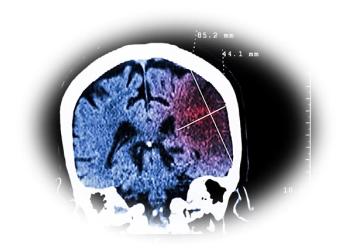
Hypertension in Dialysis Patients: Primary Care Primer
When CKD 4-5 progresses to ESRD, how should hypertension management be changed? Or, should it?
There are a lot of positives in efforts to have all patients established with a primary care provider-no matter the myriad comorbidities. One area, however, that may cause some discomfort is a patient on dialysis. Although primary care can implement suggestions that are beneficial (eg, vaccines, better diabetic control, and cancer screening), hypertension is prevalent in this group and management of elevated blood pressure different than in the general population. So, how about a primer in ESRD blood pressure management?
In the interests of time and space, I will offer selected suggestions. For more information, readers may refer to the two review articles chosen as references.1,2
1. If you ask whether home or office blood pressures can be chosen as representative vs dialysis measurements, the answer is yes. In fact, accurate home measurements are better than pre- and post-dialytic blood pressures. Blood pressure measures obtained outside of dialysis correlate better with mortality than in-dialysis pressures. There are data demonstrating that survival is better in dialysis patients on antihypertensive therapy than in those who are not.
2. Blood pressure management strategies in patients with CKD 3-5 and not on dialysis cannot be extrapolated to dialysis patients (see the following).
3. Angiotensin-converting enzyme inhibitors (ACEIs) are not as attractive a treatment choice in dialysis patients with hypertension. In a head-to-head comparison between atenolol and lisinopril, atenolol was superior in regard to blood pressure control and frequency of cardiovascular events (cardiovascular death was 2.29 times higher in the lisinopril limb). This disparity is not seen in patients not on dialysis. Some data suggest similar outcomes for angiotensin receptor blockers used in dialysis patients as those seen with ACEIs.
4. Beta blockers may be losing favor as primary antihypertensive agents in patients not on dialysis, but they are superior in patients with ESRD on dialysis. In dialysis populations with hypertension and coronary disease (a frequent combination), beta blockers lowered mortality by approximately 10% vs other antihypertensive medications.
5. Other agents discussed in the reviews were hydralazine (“little place in blood pressure management”) and clonidine. Although the authors were negative about clonidine’s side effects, they proposed one interesting use. For noncompliant dialysis patients, applying the clonidine patch at the dialysis unit once per week may help. As a bonus, clonidine helps with dialysis-associated restless leg syndrome.
6.The next innovation in hypertension treatment in dialysis patients may be spironolactone. Initial, small studies are promising.
7. Here comes the hard part! Communication with the treating nephrologist is essential. Adjusting dry weight and/or the sodium concentration in the dialysate may be a life saver.
References
1. Campese V, Lakdawala R.
2. Georgianos PI, Agarwal R.
Newsletter
Enhance your clinical practice with the Patient Care newsletter, offering the latest evidence-based guidelines, diagnostic insights, and treatment strategies for primary care physicians.




























































































































































































































































































